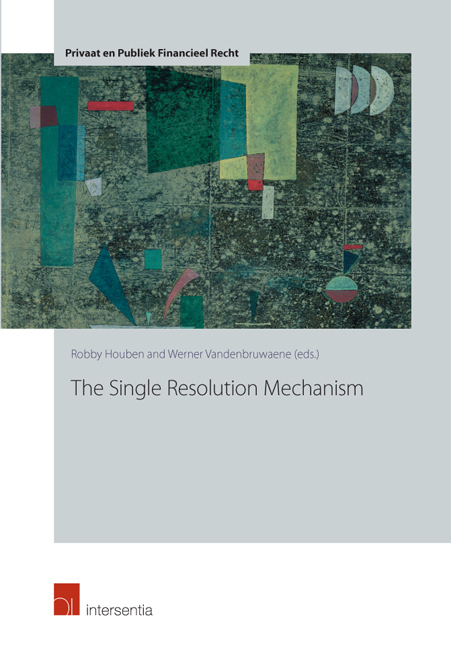Book contents
- Frontmatter
- Preface
- Contents
- Introduction: Recovery and Resolution, Future Solutions for Dealing with Insolvency
- The Single Resolution Mechanism. Institutional and Financing Arrangements for Bank Resolution in the European Banking Union
- Resolution from the Belgian Resolution Authority's Perspective
- Judicial Protection in the Single Resolution Mechanism
- The Rules on State Aid and the Framework for Bank Resolution: Foreplay and Interplay
- Concluding Remarks on Resolution and Resolvability Challenges
The Rules on State Aid and the Framework for Bank Resolution: Foreplay and Interplay
Published online by Cambridge University Press: 25 September 2018
- Frontmatter
- Preface
- Contents
- Introduction: Recovery and Resolution, Future Solutions for Dealing with Insolvency
- The Single Resolution Mechanism. Institutional and Financing Arrangements for Bank Resolution in the European Banking Union
- Resolution from the Belgian Resolution Authority's Perspective
- Judicial Protection in the Single Resolution Mechanism
- The Rules on State Aid and the Framework for Bank Resolution: Foreplay and Interplay
- Concluding Remarks on Resolution and Resolvability Challenges
Summary
FOREPLAY: STATE AID RULES AS PRECURSOR AND INSPIRATION FOR THE SINGLE RESOLUTION MECHANISM
The rules on State aid were part of the initial version of the EEC Treaty (currently the “Treaty on the Functioning of the European Union” or TFEU). The Single Resolution Mechanism (‘SRM’) and the Bank Recovery and Resolution Directive (‘BRRD’) were adopted in 2014, as part of the Union's (regulatory) response to the financial crisis.
One of the main objectives of the BRRD and the SRM is to prevent credit institutions from failing and curtailing the so-called ‘moral hazard’ that may arise when failing institutions are rescued with taxpayer money. Those objectives are not new EU policy; when the financial crisis erupted in 2008, it became apparent that the rescuing of credit institutions with taxpayer money would be impossible (politically at least) to avoid. The European Commission – the EU institution that is exclusively competent to approve State aid – adapted its assessment of rescue and restructuring aid (‘R&R aid’) with the aim of preventing moral hazard as much as possible.
As explained below, the principles that underpinned the Commission's assessment of R&R aid served as the inspiration for many of the rules set out in the SRM and the BRRD.
PRECURSOR: FROM BAIL-OUT BY THE STATE TO BAIL-IN OF SHAREHOLDERS AND CREDITORS
R&R aid aims to prevent the failure of an undertaking and to restore its long-term viability. R&R aid is a prime source of moral hazard: where the state rescues an undertaking that is unable to survive on the market, such an intervention may lead other market participants to believe that the government will (also) intervene if they should fail. This can tempt undertakings to take unjustified risks, if they are under the assumption that they will avoid the consequences of their market behaviour. Where it is accepted that certain undertakings are too big (or too systemic) to fail, the risk of moral hazard becomes especially apparent.
The risk of moral hazard exists not only at the level of the undertaking, but also at the level of that undertaking's shareholders and creditors. Indeed, if the state uses taxpayer funds to rescue an undertaking from failure, then that intervention avoids that shareholders and creditors undergo the normal consequences of their prior decision (loss of their investment or claim).
- Type
- Chapter
- Information
- The Single Resolution Mechanism , pp. 121 - 134Publisher: IntersentiaPrint publication year: 2017

